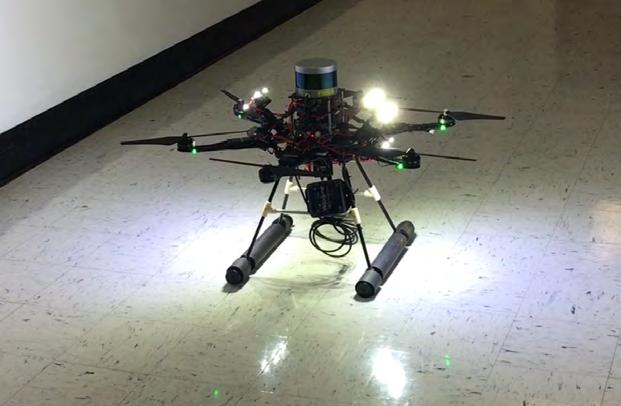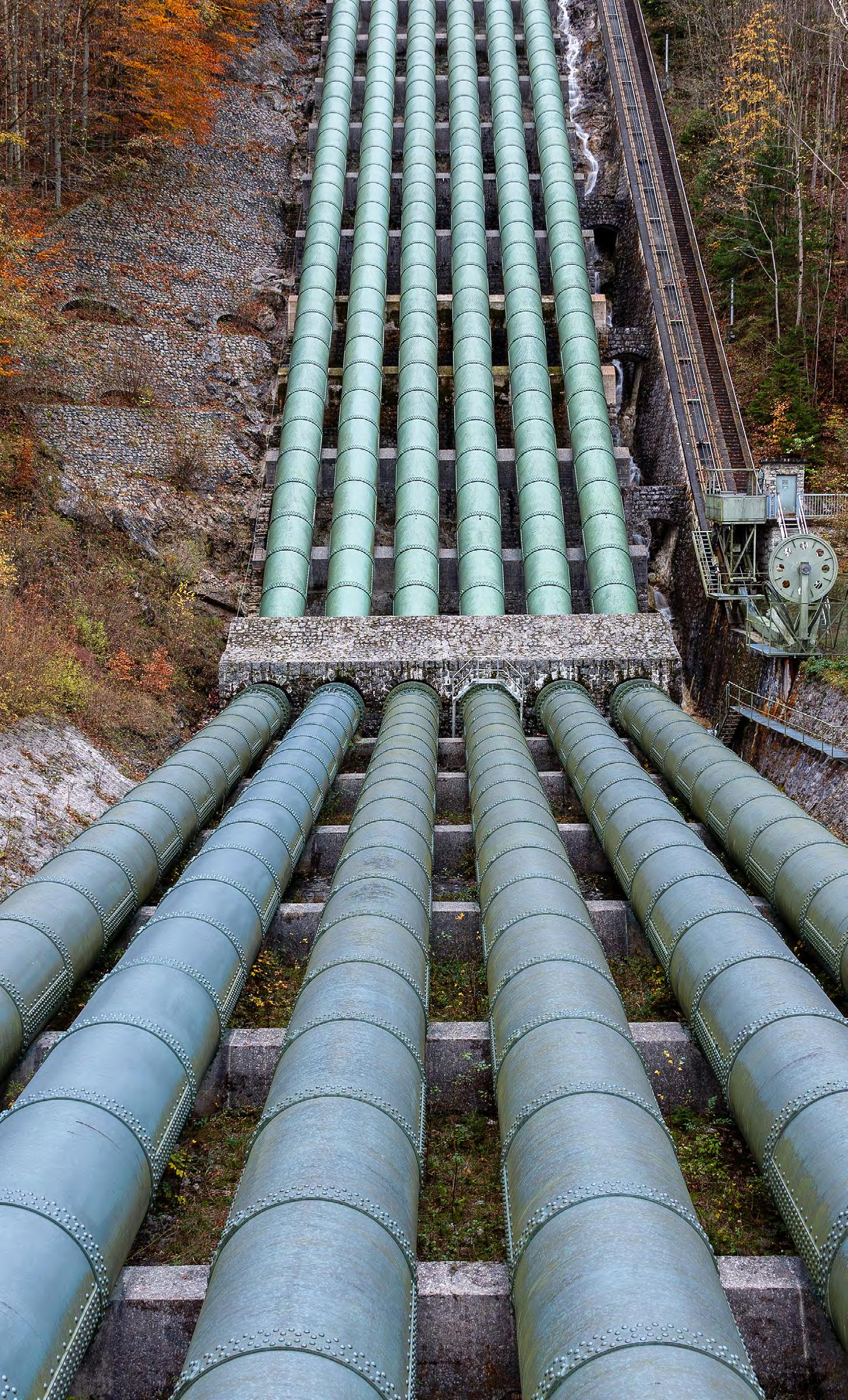
2 minute read
Microbotic Infrastructure Assessment
REDUCES RISK TO PERSONNEL & INSPECTION TIME
SPEEDS ARCHIVES DATA INSPECTIONS & ARCHIVES DATA
Penstocks are long steel tubes that carry water from the upstream side of a dam to hydroelectric turbines deep in the dam superstructure. Due to difficulty inspecting them, ERDC research is developing a small, robust, operational, unmanned, micro-inspection robot called Microbot. The Microbot requires little to no skill to operate because it uses a suite of onboard sensors to map the penstock and navigate from one end to the other without human input, avoiding obstacles along the way. The Microbot illuminates the penstock interior with onboard LEDs and collects imagery for the entire penstock circumference as the robot flies down the center of the tube. Software developed for the Microbot processes imagery and LIDAR data collected by the robot into formats that can be used in semiautomated post-flight virtual inspections. Machine learning algorithms automatically detect areas where the penstock lining is corroded or otherwise compromised and presents them to inspection engineers for further investigation.

PROBLEM: Penstocks that are not routinely inspected and properly maintained can result in powerhouse flooding, leading to high repair and outage costs, plus the potential loss of life and reservoir pool. Penstock inspections pose a number of safety risks to personnel, including mechanical equipment and water control lockage, climbing, air quality, slippery surfaces, extremely confined spaces, inadequate lighting and metal edges. The time needed to complete inspections and subsequent repair can extend power generation outages.
SOLUTION: The Microbot provides an operational capability to inspect the confined space of penstocks with no personnel inside. Using this new capability, imagery for virtual penstock inspection is collected much faster, more completely and with greater safety. The imagery provides a historical record of interior penstock condition that can be compared with subsequent imagery for change detection and condition tracking.

IMPACT: Microbotic penstock inspections eliminate the need for personnel to enter the penstock for inspections, greatly reducing personnel risk from a number of safety hazards. The speed of microbotic penstock inspections means any necessary penstock repairs start sooner, reducing the length of power generation outages. A digital virtual penstock built from microbotic penstock imagery is preserved in perpetuity for accurate tracking of condition and repairs.











